14 Mistakes Everyone Makes With Fresh, Homemade Pasta

After living in Italy for four years, there is one thing that I can say I have truly learned: how to make fresh pasta. My Italian mother-in-law makes homemade pasta for the whole family almost every week during the summer, and she also invites me to help make the pasta ahead of time so that I can improve my (previously completely undeveloped) technique. Over the years, I have gone from not even knowing what tagliatelle is to being able to make it blindfolded (almost). But that's not to say I haven't made a lot of mistakes along the way!
Making fresh, homemade pasta is a fun, rewarding, and obviously delicious experience, but there are a lot of ways things can go wrong. You can use the wrong ingredients, mix them the wrong way, or ruin your whole batch of pasta by letting the finished pieces touch each other. Let's look at some of the most common mistakes people make so that your own homemade pasta will turn out perfect (or almost perfect) every time.
Read more: 8 Baking Sheet Mistakes You Want To Avoid
Mistake: Using The Wrong Amount Of Eggs
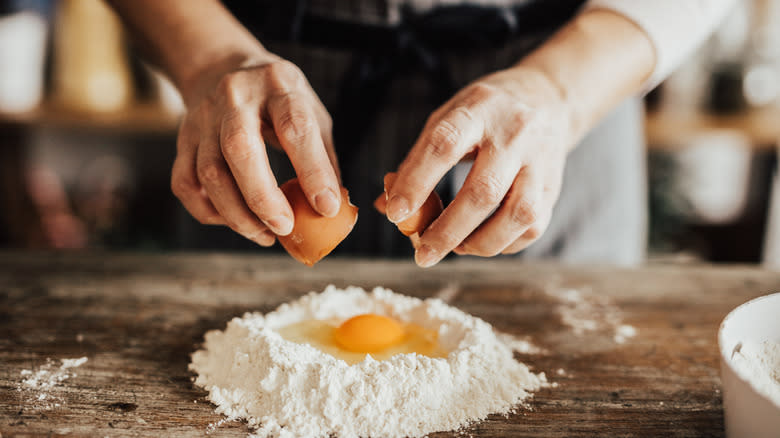
There are three ingredients involved in making pasta dough: water, flour, and eggs. Unfortunately, that egg part can be tricky, because it is largely based on preference and the type of pasta you're making. Spaghetti, for example, doesn't call for any eggs in the dough at all. Most other types of fresh, homemade pasta do call for some eggs, but the amount varies based on the type of pasta and your preference. The key is to strive for a happy medium.
Adding too many eggs to your dough can make it sticky and too wet, but not adding enough eggs will make it dry and hard to work with. It will also affect the taste of the dough. Your pasta should have a nice, rich flavor, but if you add too many eggs, the pasta will taste noticeably "eggy," a flavor which isn't easily covered up by your chosen sauce.
For decades (maybe even centuries), the recommendation has been to use one egg per 100 grams of flour in your dough, but this is problematic, as eggs can be different sizes even within the same egg carton. Some chefs recommend around 55 to 57 grams of egg per 100 grams of flour, but if you want to make your pasta a bit lighter while still keeping the right consistency, you can do as chefs like my mother-in-law (who have 60+ years of pasta-making experience) do and add just one egg per 500 grams of flour.
Mistake: Letting The Dough Dry Too Much
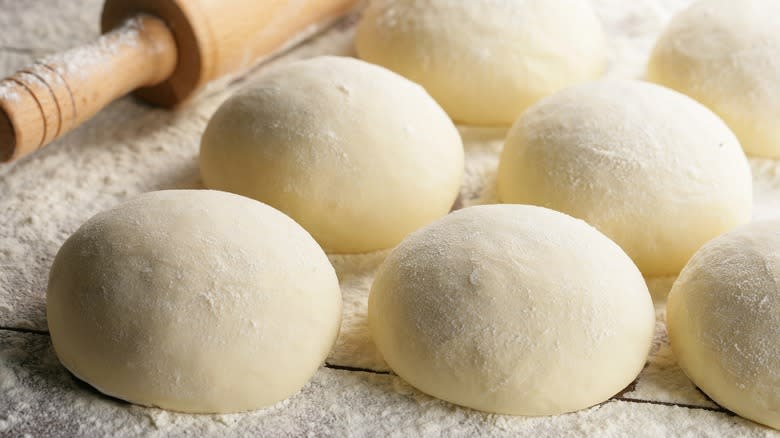
Have you ever found that the first half of your dough made some great pasta, but the second half turned out dry and full of chunks? This is what happens when you let your dough dry out while you are working with it.
To make pasta, especially with a machine, you must split your ball of dough into several sections and start making pasta with them one piece at a time. But oftentimes while you are concentrating on the piece of dough you are putting through the machine, the other sections you left behind are exposed to the elements and become dry.
To avoid this problem, simply keep your remaining dough covered with a towel or some plastic wrap while you are not using it. It is also a good idea to keep it away from heat during this time, so if you are already warming up the pasta water or the sauce on the stove, make sure to keep your dough far away from it to ensure the consistency stays the same.
Mistake: Using The Wrong Amount Of Flour
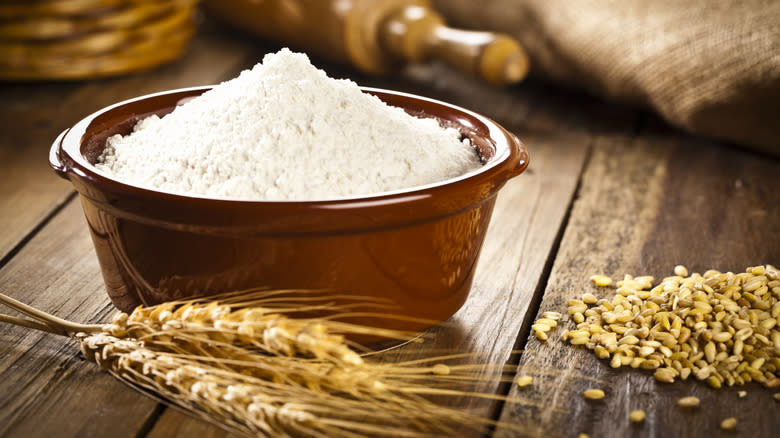
Just as getting the right amount of eggs can be tricky when making pasta dough, flour can cause some consternation as well. If you don't add enough, your pasta will be dry and crumbly, which makes it hard to work with and nearly impossible to put through a pasta machine. On the other hand, if you add too much flour, your dough will be sticky and wet, which arguably makes it even harder to work with.
Conventional wisdom holds that you should generally add around 100 grams of flour per person. So, if you are hoping to end up with five servings of pasta, you should start with 500 grams of flour. It is better to measure your ingredients by weight instead of by cups when it comes to making pasta dough because you can get a more accurate measurement this way.
If you find that your dough is too dry, you can add some water, but only add a tiny bit at a time and only do this after you have kneaded it for quite some time and are absolutely sure it won't improve with a bit more mixing. If your dough is too wet, you can also add some more flour, but again, only do this a bit at a time. You will often find that if your dough is too wet, working it for several more minutes will allow it to dry out more and correct itself.
Mistake: Not Kneading The Dough Enough
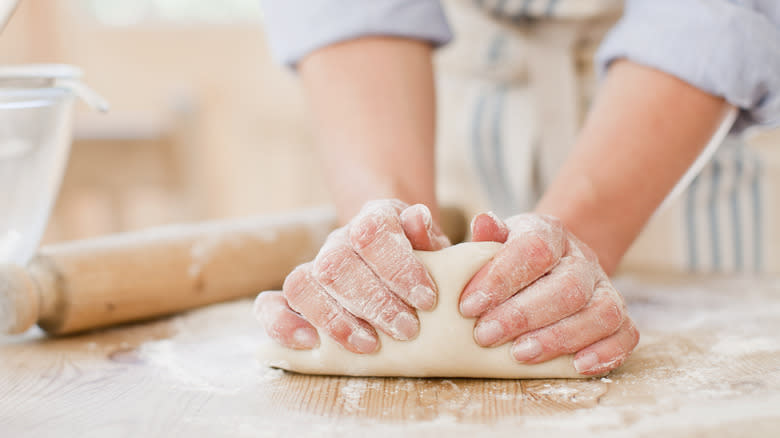
When it comes to pasta dough, kneading is important. Just like with homemade bread, working the dough is perhaps the most vital part of the process because it lets all the ingredients come together in the proper way, and over time.
Pasta dough doesn't contain much water or moisture, so it takes time for the flour to absorb it evenly. Kneading the dough helps the flour to take in that moisture, while also aiding in the formation of gluten. Gluten is what gives pasta dough its elasticity, and without it, your dough will be hard to spread and won't hold its shape.
Every batch of pasta is different, so the amount of time you need to knead it varies, but you should continue until it is smooth, firm, and holds its shape. It shouldn't stick to your finger when you touch it, and it shouldn't have any crumbly bits. To achieve this, you can work the dough by hand, or put it in a stand mixer with the same attachment you would use to make bread dough.
Mistake: Working The Dough Too Fast
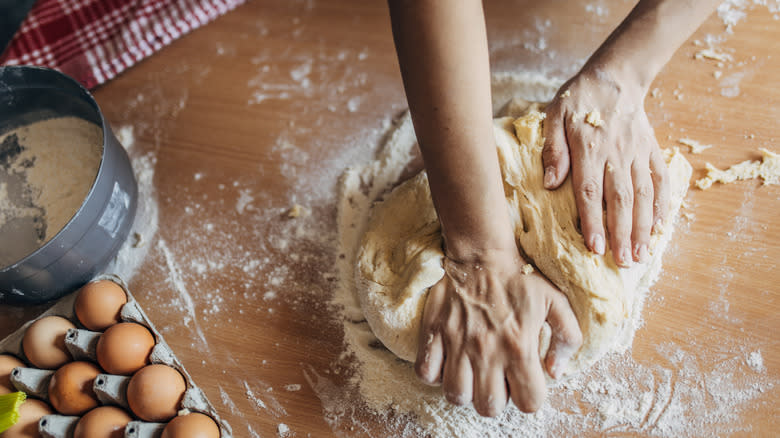
One mistake is not kneading the dough enough. Another is kneading it too fast. Pasta making takes time, so it is no wonder that some of the more impatient chefs may want to try to speed things up by kneading the dough very quickly. You may think that the quicker you work it, the quicker it will be ready, but this is not true.
Kneading the dough too fast doesn't allow it the time it needs to come together and to develop gluten. This is true whether you are kneading by hand or using a machine, but it is especially common in the latter case, as there are many settings that are much too high for prepping pasta dough.
If your dough doesn't come together right at this stage, it won't stretch or spread correctly when you move onto the next stage, which is forming the pasta shapes by hand or with a pasta machine. Think like the tortoise and the hare here: Slow and steady wins the pasta-making race.
Mistake: Not Letting The Dough Rest
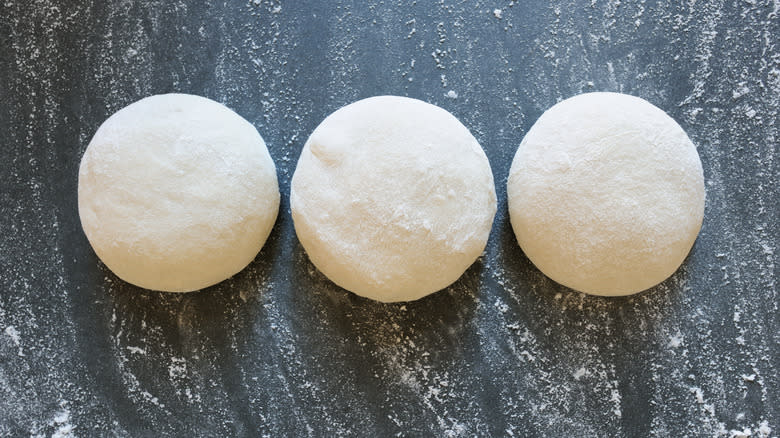
If you make a lot of cakes and muffins, you are probably used to just mixing up the batter and popping it in the oven. Once everything comes together, it's ready to go, right? Not when it comes to pasta dough!
Pasta dough needs time to rest. Kneading the dough gets things going as it helps to kick-start the production of gluten, but the real magic happens when you put the dough down and leave it alone for a while before making pasta with it. This is when the gluten formation really takes off and the dough starts to truly become homogeneous. It is recommended to let your dough rest for around 30 minutes at room temperature, which will make it is easier to work with and a better consistency. Cookie bakers, beware, though. Unlike cookie dough, pasta dough should be left at room temperature to do its thing, as putting it in the refrigerator will just make it hard and unworkable.
Mistake: Not Measuring The Ingredients
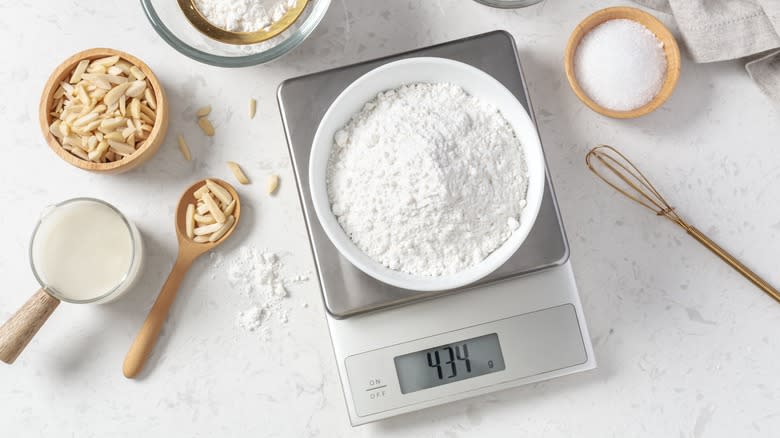
If you have been making pasta for a while, you might start to get cocky. You don't need to measure the ingredients anymore, you can tell just by looking at them that you have the right amount of flour and water. Who needs a scale? Not you! Hold it right there, Masterchef.
Even the best cooks in Italy who have been making pasta their entire lives will tell you that you can't just eyeball your ingredients, because there is a certain science to making pasta dough. Being off by just 20 grams or so of any ingredient can wreak havoc with your pasta, making it too wet or too dry.
This error is especially egregious if you get carried away with the water. It is very easy to add too much moisture, which then leads to you adding more flour and over-correcting, then adding more water to even it out, and on and on in an endless cycle that makes it extremely difficult to get your pasta dough back on track. It is best to get the ingredient measurements right by using a scale to avoid issues later.
Mistake: Making Pasta Too Thick Or Too Thin
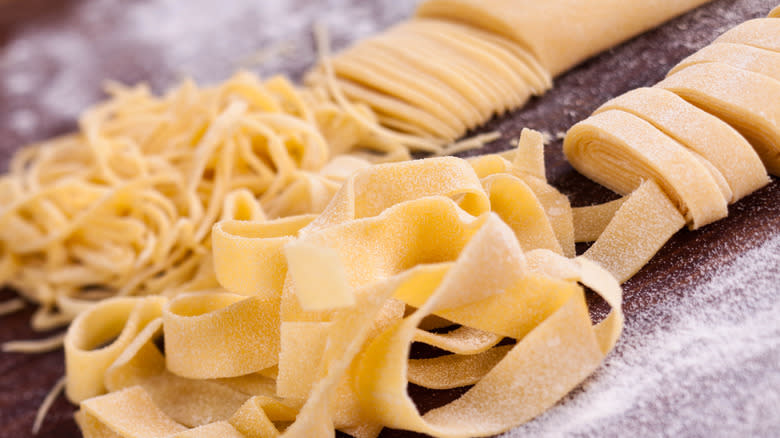
Once your dough is prepared, it is time to move on to actually making of the pasta. Usually, this involves putting the dough through a pasta machine to flatten and smooth it, but you can also do this by hand. Either way, you must be careful to get your pasta to the right thickness, otherwise, it won't cook correctly. Too thick and the interior of the pasta might not get cooked all the way or the whole thing will be chewy; too thin and it will get overcooked and soggy, or just fall apart.
Worse than this, though, is making a batch of pasta that has a mix of thin and thick pieces. You will inevitably put them all in the boiling water at the same time and take them out at the same time, but since they are different sizes, they will cook at different rates. Some of your pasta will come out perfectly al dente, but other parts might be gummy or mushy. For this reason, it's best to pick a thickness and stick to it. The proper thickness will depend on the type of pasta you are making, so it is best to consult your recipe before you start.
Mistake: Using The Wrong Type Of Flour
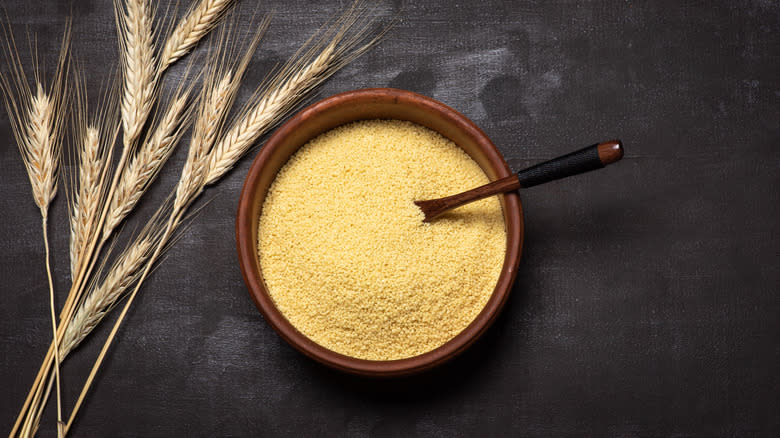
It is not just the amount of flour in your pasta dough that is important, but also the type of flour you use. For centuries, the preferred flour for making pasta has been semolina, which is made from durum wheat. This type of flour is known for holding its shape well in things like pasta and bread, and is also known for forming gluten with ease -– something that is essential for good pasta. It also gives your noodles that trademark golden yellow color. Semolina is especially preferred for pasta like spaghetti that doesn't contain eggs, as it doesn't need as much help forming the gluten as other types of flour.
If you don't have any semolina, don't worry. You can still make pasta with 00 flour, which is a very fine flour that is also often used in pizza dough. If you use this kind, you will most likely need to add less moisture to your dough, since the particles of flour are smaller and absorb water more easily.
Mistake: Not Using The Pasta Machine Properly (Or At All)
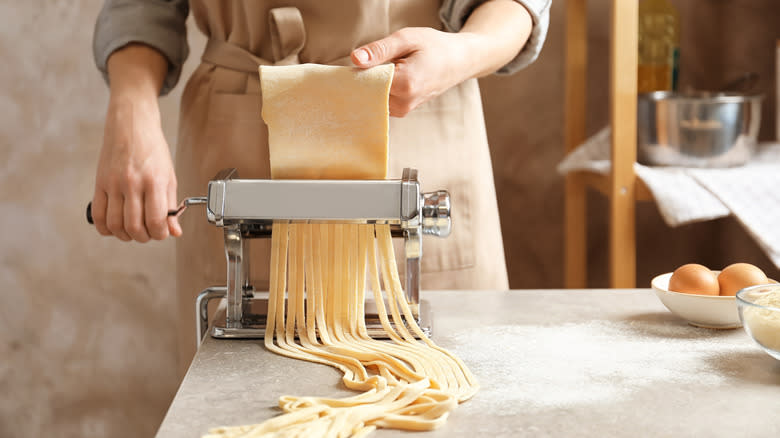
This one is a rookie mistake. It seems simple to just make some pasta dough, roll it out, and cut it into strips to cook, but there is more to it than this. While it is possible to get the dough thin enough (and the right consistency) with a rolling pin and some patience, a pasta machine can make this so much easier.
The pasta machine comes with its own long list of potential mistakes, but once you master it, you will find that it makes pasta-making a breeze. Simply cut your ball of prepared dough into four sections and flatten one on the table. Feed it into the machine on the widest setting, turning the crank as you go, and gently guide it as it comes out the other side. Then, fold it in half (or thirds, if it is very long) and repeat the process until the dough begins to look smooth and flat. You can then start to decrease the thickness by turning the dial to a lower number, making sure to go slowly so as not to cause a jam. Once the dough has reached the thickness you are looking for, you can either cut pasta pieces from it yourself, or use an attachment to make fettuccine, tagliatelle, or other pasta shapes with an ideal width.
Mistake: Letting Your Pasta Stick Together
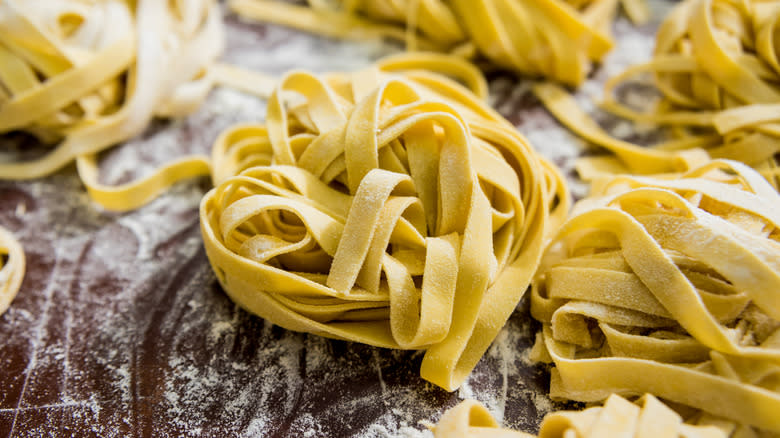
There is nothing more frustrating than spending half an hour or more making a big batch of pasta, only to find that it has become a sticky, knotted mess on the table when you try to pick it up. Even if your dough looks dry enough and doesn't necessarily feel sticky when you touch it, it will stick together if it touches another piece of raw dough. This is the one undeniable fact in pasta making, and something you should always keep in mind when you are placing the just-formed pasta on your work surface.
The best thing to do is to make sure there is space between your pasta pieces. If possible, lay them out one by one and keep some distance between them. But if this is not possible (which it often isn't with pasta like tagliatelle that comes out of the machine with many strands at once), flour is your best buddy. Dust your pasta with flour and shake it to separate the strands. Try to untangle the clumps of noodles as best you can and spread them in a layer on a floured towel. You can also make a second layer by covering the first with a towel and adding more flour to that surface. In either case, try not to leave the pieces sitting together for too long, as this gives them more time to form clumps that won't come unglued when you cook them.
Mistake: Not Keeping An Eye On The Cooking Time

Store-bought dry pasta is very simple to cook. All you have to do is bring a pot of salted water to a boil on the stove and add in your pasta, then boil for the amount of time listed on the package. Fresh, homemade pasta works much the same way. Once the hard work of making the pasta is done, you just have to toss it into a pot of salted, boiling water and cook it. But there is one big difference to keep in mind: Fresh pasta cooks much faster than its dry pasta counterpart.
Whereas most dry pasta cooks in around 10 minutes, fresh pasta is usually cooked in just two to five. This is because fresh pasta is already softer than dry pasta, so it needs just enough time to become firm. For this reason, it is highly recommended that you don't leave your fresh pasta unattended on the stove. If you let it cook for too long, it will become mushy and unappealing, which will make it hard to get out of the pan and even harder to eat with the sauce or other topping you prepared to go with it.
Mistake: Overfilling Stuffed Pasta
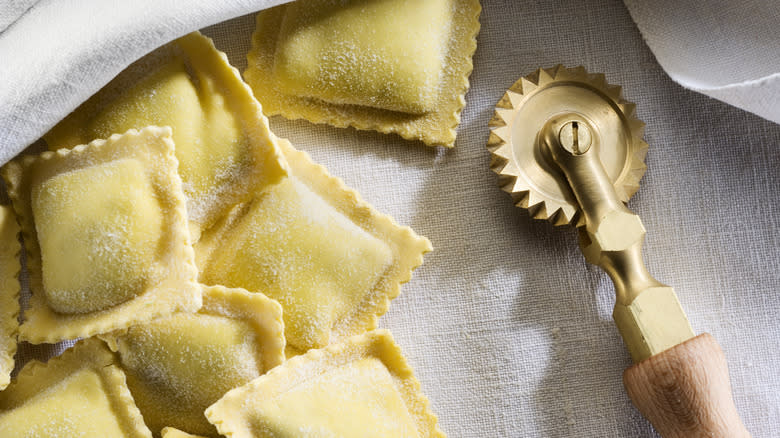
Ravioli and tortellini are very popular pastas that are surprisingly easy to make at home. You simply have to make the dough, cut it into the proper shape for the stuffed pasta you are making, and then fill it with your choice of meat, cheese, or vegetables. Unfortunately, this last part is where things can go sideways.
Using ravioli as an example, the process goes like this: Lay out the squares or circles of dough and place a spoonful of filling in the center of each one. Then, put a second square or circle on top to close them, and seal the edges -- but this is where the problems might start. If you add too much filling, there is not enough of a border around the edges to close them properly. Even if it looks okay before you put it in the boiling water to cook it, it may burst open and let the filling escape, leading to ruined ravioli.
This may take some trial and error, but it is better to put a bit less filling in the middle than you think is necessary to ensure that there is some space around the edges; this will allow the top layer to really meld with the bottom one. Another sign that you've added too much stuffing is that the top layer of dough looks transparent, which means that it has been stretched too much and will probably burst when cooking.
Mistake: Not Doing A Test Run Before Making Pasta For Company

Making homemade pasta for family and friends is a great way to show how much you care about them (and a good way to impress them). However, it is strongly discouraged to have the first time you ever make pasta be an hour before a big event where you will be serving it.
Even if you read all the tips on this list and even if you are sure that pasta making is easy, hiccups happen, even to pasta making veterans, so it is a good idea to make a test batch of pasta a few days or a week before your big event. There is a lot of trial and error involved in making pasta, and you have to find the technique that works for you. You also have to make sure you know how long to cook your pasta and how much filling to put in it or how much sauce to put on it; it is better to get all the mistakes out of the way before you have company so you can go into your meal with confidence and without stress. Plus, this gives you an excuse to eat even more fresh pasta, which is something we could all use.
Read the original article on Daily Meal.